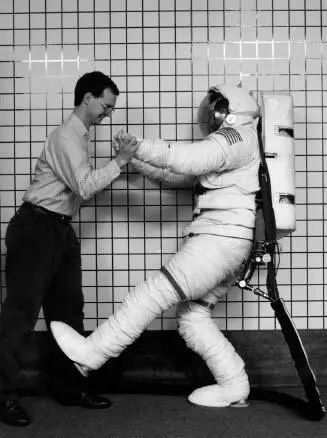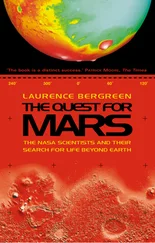Mary Roach
PACKING FOR MARS
The Curious Science of Life in the Void
For Jay Mandel and Jill Bialosky,
with cosmic gratitude

To the rocket scientist, you are a problem. You are the most irritating piece of machinery he or she will ever have to deal with. You and your fluctuating metabolism, your puny memory, your frame that comes in a million different configurations. You are unpredictable. You’re inconstant. You take weeks to fix. The engineer must worry about the water and oxygen and food you’ll need in space, about how much extra fuel it will take to launch your shrimp cocktail and irradiated beef tacos. A solar cell or a thruster nozzle is stable and undemanding. It does not excrete or panic or fall in love with the mission commander. It has no ego. Its structural elements don’t start to break down without gravity, and it works just fine without sleep.
To me, you are the best thing to happen to rocket science. The human being is the machine that makes the whole endeavor so endlessly intriguing. To take an organism whose every feature has evolved to keep it alive and thriving in a world with oxygen, gravity, and water, to suspend that organism in the wasteland of space for a month or a year, is a preposterous but captivating undertaking. Everything one takes for granted on Earth must be rethought, relearned, rehearsed—full-grown men and women toilet-trained, a chimpanzee dressed in a flight suit and launched into orbit. An entire odd universe of mock outer space has grown up here on Earth. Capsules that never blast off; hospital wards where healthy people spend months on their backs, masquerading zero gravity; crash labs where cadavers drop to Earth in simulated splash-downs.
A couple years back, a friend at NASA had been working on something over in Building 9 at the Johnson Space Center. This is the building with the mock-ups, some fifty in all—modules, airlocks, hatches, capsules. For days, Rene had been hearing an intermittent, squeaking racket. Finally, he went to investigate. “Some poor guy in a spacesuit running on a treadmill suspended from a big complicated gizmo to simulate Martian gravity. Lots of clipboards and timers and radio headsets and concerned looks all around.” It occurred to me, reading his email, that it’s possible, in a way, to visit space without leaving Earth. Or anyway, a sort of slapstick-surreal make-believe edition. Which is more or less where I’ve been these past two years.
OF THE MILLIONS of pages of documents and reports generated by the first moon landing, none is more telling, to me anyway, than an eleven-page paper presented at the twenty-sixth annual meeting of the North American Vexillological Association. Vexillology is the study of flags, not the study of vexing things, but in this case, either would fit. The paper is entitled “Where No Flag Has Gone Before: Political and Technical Aspects of Placing a Flag on the Moon.”
It began with meetings, five months before the Apollo 11 launch. The newly formed Committee on Symbolic Activities for the First Lunar Landing gathered to debate the appropriateness of planting a flag on the moon. The Outer Space Treaty, of which the United States is a signer, prohibits claims of sovereignty upon celestial bodies. Was it possible to plant a flag without appearing to be, as one committee member put it, “taking possession of the moon”? A telegenically inferior plan to use a boxed set of miniature flags of all nations was considered and rejected. The flag would fly.
But not without help from the NASA Technical Services Division. A flag doesn’t fly without wind. The moon has no atmosphere to speak of, and thus no wind. And though it has only about a sixth the gravity of Earth, that is enough to bring a flag down in an inglorious droop. So a crossbar was hinged to the pole and a hem sewn along the top of the flag. Now the Stars and Stripes would appear to be flying in a brisk wind—convincingly enough to prompt decades of moon hoax jabber—though in fact it was hanging, less a flag than a diminutive patriotic curtain.
Challenges remained. How do you fit a flagpole into the cramped, overpacked confines of a Lunar Module? Engineers were sent off to design a collapsible pole and crossbar. Even then, there wasn’t room. The Lunar Flag Assembly—as flag, pole, and crossbar had inevitably come to be known—would have to be mounted on the outside of the lander. But this meant it would have to withstand the 2,000-degree Fahrenheit heat generated by the nearby descent engine. Tests were undertaken. The flag melted at 300 degrees. The Structures and Mechanics Division was called in, and a protective case was fashioned from layers of aluminum, steel, and Thermoflex insulation.
Just as it was beginning to look as though the flag was finally ready, someone pointed out that the astronauts, owing to the pressurized suits they’d be wearing, would have limited grip strength and range of motion. Would they be able to extract the flag assembly from its insulated sheath? Or would they stand there in the gaze of millions, grasping futilely? Did they have the reach needed to extend the telescoping segments? Only one way to know: Prototypes were made and the crew convened for a series of flag-assembly deployment simulations.
Finally came the day. The flag was packed (a four-step procedure supervised by the chief of quality assurance) and mounted on the Lunar Module (eleven steps), and off it went to the moon. Where the telescoping crossbar wouldn’t fully extend and the lunar soil was so hard that Neil Armstrong couldn’t plant the staff more than about 6 or 8 inches down, creating conjecture that the flag was most likely blown over by the engine blast of the Ascent Module.
Welcome to space. Not the parts you see on TV, the triumphs and the tragedies, but the stuff in between—the small comedies and everyday victories. What drew me to the topic of space exploration was not the heroics and adventure stories, but the very human and sometimes absurd struggles behind them. The Apollo astronaut who worried that he, personally, was about to lose the moon race for the United States by throwing up on the morning of his spacewalk, causing talk of tabling it. Or the first man in space, Yuri Gagarin, recalling that as he walked the red carpet before the Presidium of the Central Committee of the Communist Party of the Soviet Union and a cheering crowd of thousands, he noticed that his shoelace was undone and could think of nothing else.
At the end of the Apollo program, astronauts were interviewed to get their feedback on a range of topics. One of the questions: If an astronaut were to die outside the spacecraft during a spacewalk, what should you do? “Cut him loose,” read one of the answers. All agreed: An attempt to recover the body could endanger other crew members’ lives. Only a person who has experienced firsthand the not insignificant struggle of entering a space capsule in a pressurized suit could so unequivocally utter those words. Only someone who has drifted free in the unlimited stretch of the universe could understand that burial in space, like the sailor’s burial at sea, holds not disrespect but honor. In orbit, everything gets turned on its head. Shooting stars streak past below you, and the sun rises in the middle of the night. Space exploration is in some ways an exploration of what it means to be human. How much normalcy can people forgo? For how long, and what does it do to them?
Early in my research, I came across a moment—forty minutes into the eighty-eighth hour of Gemini VII—which, for me, sums up the astronaut experience and why it fascinates me. Astronaut Jim Lovell is telling Mission Control about an image he has captured on film—“a beautiful shot of a full Moon against the black sky and the strato formations of the clouds of the earth below,” reads the mission transcript. After a momentary silence, Lovell’s crewmate Frank Borman presses the TALK button. “Borman’s dumping urine. Urine [in] approximately one minute.”
Читать дальше













